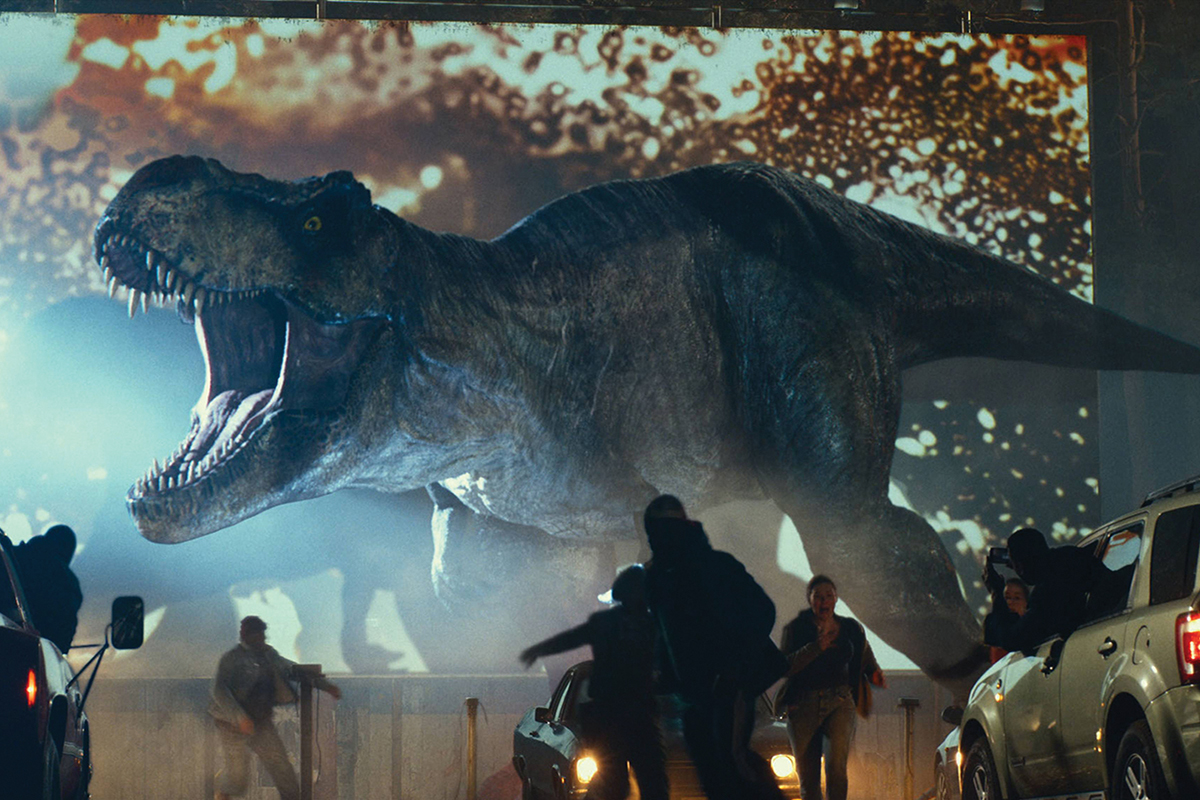
fortnite snow globe
When my oldest child was seven or eight, I used to come into the kitchen in the early morning to find him already awake looking through dinosaur books, his favorite a now out-of-print book called A Gallery of Dinosaurs and Other Early Reptiles by David Peters. Unlike most books aimed at kids, this one was full of detailed descriptions of various species’ physical features and social behaviors written in serious prose for a general adult reader. For over a year, my son read and wanted to be read to from this book. It led him to ask me things like, “Mom, what is your favorite ankylosaur from the late Jurassic period?” or “How different were archosaurs from dinosaurs?” while I scrambled to pour myself a cup of coffee.
By the time he was old enough to watch Jurassic Park he’d mostly outgrown this dino obsession. But even 25 years after its making, Steven Spielberg’s 1993 movie perfectly captured the sheer wonder of a nerdy kid stumbling into a world where all those glorious creatures in your favorite book have come to life. And, of course, the sheer terror of realizing what it would be like to be trapped inside a park with them.
By the time my son watched Jurassic Park, the franchise had already produced two sequels and was spawning a second incarnation—the Jurassic World saga, the third and supposedly final of which—Jurassic World Dominion (directed by Colin Trevorrow)—arrived in theaters this summer.
The Jurassic World films are cheekily self-aware of their predecessors. A successful new theme park has risen from the ashes and bones of the first, but (wouldn’t you know?) scientific hubris, military overreach, and plain old greed produce a series of terrible human choices, which conspire with the natural instincts of the dinosaurs, who do terrifying dinosaur things, and so the second park goes the way of the first. By the final movie, the dinosaurs are scattered around the globe, some integrating into local habitats, some continuing to wreak havoc, while a suspicious new biotech conglomerate promises to contain and study them. Our heroes—who have reunited across all the films—have to figure out what nefarious things the scientists are plotting for profit and how to stop them. They do this while escaping, once again, predatory dinosaurs who crash through thick jungles and show off some new creature features.
The first Jurassic Park movie embedded in its action sequences big philosophical questions about the limits of science and the dangers of trying to control nature, and it argued its position with razor-sharp claws and clever velociraptors. The newest Jurassic World movie could have asked even more urgent questions about how we might learn to live with disasters of our own making, but the movie transfers the drama from the dinosaurs let loose on the world to a half-baked plot about crop failures that is resolved so blithely it barely registers as a threat. By the end, we have lost the fear and wonder of the dinosaurs—who seem like CGI extras in their own movie—and the biting commentary about our own hubris.
What Jurassic World seems to have forgotten is what any dino-obsessed kid can tell you: one of the delights of dinosaur nerdery is imagining the world without humans. Dinosaurs are enticing in part because we are separated from them by an inconceivable distance of time. Apple TV+’s new limited series Prehistoric Planet uses the same advanced CGI technology as the Jurassic franchise to re-create this world in all its startling otherness.
Narrated by David Attenborough, the voice of many BBC nature documentaries, the five-part series imbues these imaginary reproductions with a lavish realism that makes it hard to remember that what you are watching is not patiently filmed nature footage but computer-generated speculation. On a rainy Saturday, my kids and I curled up on the couch and marveled at the parenting skills of the tuarangisaurus, the adorable mimicry of baby T. rexes trying to copy their father, and the herd behaviors of the triceratops. Even my 12-year-old emerged from his new obsessions with NBA statistics and Fortnite skins to get lost in snow-covered forests from 66 million years ago and try to remember the facts he used to patiently recite about duck-billed and armor-plated dinosaurs.
Lured into this strange and wondrous world, I thought of the impossible scales of time such fictions make plain to us. How does one really fathom a difference measured in millions of years? We have a hard time taking the measure of our own history from even a hundred years ago. I felt the planetary scale of my world expand to something larger, vaster, stranger, and more majestic than the small circuits of daily life could ever suggest. Yet, in an even more mind-boggling paradox, the daily circuits of postindustrial life are quite literally collapsing that vast timescale every day: our fossil fuels may not come from actual dinosaur fossils, but they represent the accumulation of millions of years of organic life consumed, comparatively, in the mere blink of an eye.
I kept thinking of the now-iconic scene from the original Jurassic Park movie where the heroes try to outrun a T. rex in a jeep, its razor-sharp teeth almost touching the side mirror, while the camera focuses on the words “objects in mirror are closer than they appear.” In our modern fascination with dinosaurs, the scales of time are both stretched beyond our comprehension and brought perilously near. A thread runs through dinosaur stories, connecting us nostalgically to our childhoods and our children back through the vast timescales of our planet, for most of which our species plays no part. There is a wistful wonder in that reality—life will find a way even if it is not human life—but maybe also an invitation to reorient ourselves in time while there is still time.
A version of this article appears in the print edition under the title “Scales of time.”